Crangon alaskensis Lockington, 1877Common name(s): Northern crangon shrimp; Alaskan bay shrimp, Salt-and-pepper shrimp |
|
| Synonyms:
Neocrangon alaskensis?, Crago alaskensis |
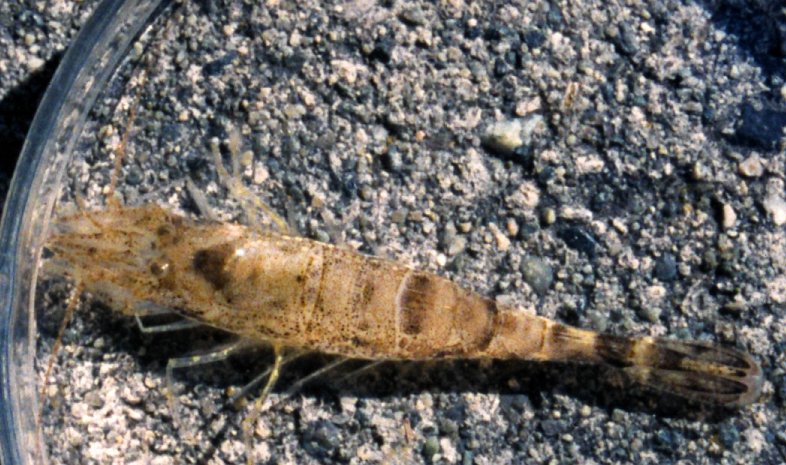 |
| Phylum Arthropoda
Subphylum Crustacea Class Malacostraca Subclass Eumalacostraca Superorder Eucarida Order Decapoda Suborder Pleocyemata Infraorder Caridea Family Crangonidae |
|
| (Crangon alaskensis from 100 m depth, San Juan Channel, WA. About 5 cm long. | |
| (Photo by: Dave Cowles, July 2000) | |
How to Distinguish from Similar Species: Crangon nigricauda has a shorter antennal scale and spine and is much less slender.
Geographical Range: Bering Sea to San Diego, CA
Depth Range: Intertidal to 275 m. This species seems to be found more often in deeper, shelf waters than near the intertidal zone.
Habitat: Crangonids often live on sand, which they often burrow into.
Biology/Natural History: This shrimp is one of the crangonids I most commonly find in 100 m depth trawls in the San Juan Channel. Crangonids are often parasitized by bopyrid isopods such as Argeia. Crangonids are active predators, eg. on polychaetes. In Puget Sound some shrimp appear to be hybrids between C alaskensis and C. nigricauda.
| Return to: | |||
| Main Page | Alphabetic Index | Systematic Index | Glossary |
References:
Dichotomous Keys:Kozloff 1987, 1996
Smith and Carlton, 1975
Wicksten, 2009
General References:
Jensen,
1995
Scientific Articles:
Campos, Joana, Claudia Moreira, Fabiana Freitas, and Henk W. van der Veer, 2012. Short review of the eco-geography of Crangon. Journal of Crustacean Biology 32:2 pp 159-169
Roberts, James O., 1965. The anatomy and histology of the eyestalks of the Alaska brown shrimp Crago alaskensis (Lockington). Masters thesis, Walla Walla College. 23 pp.
General Notes and Observations: Locations, abundances, unusual behaviors:
We frequently catch this species in 100 m depth trawls in the San Juan Channel.
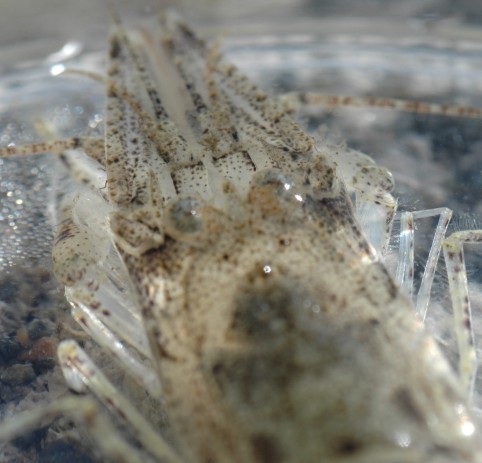
Most crangonids have a very stubby rostrum,
seen here as the small "horn" between the eyes for Crangon
alaskensis
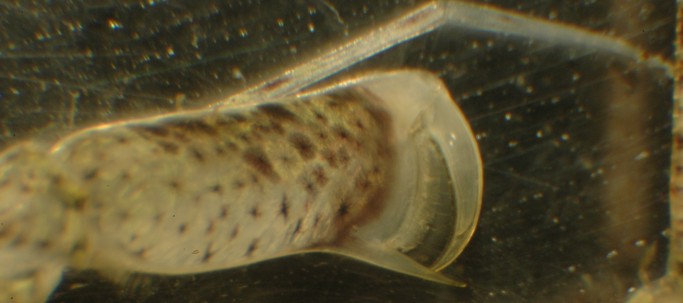
As with all Crangonids, the first pereopod
of Crangon alaskensis is subchelate
and the carpus
of the second pereopod (visible just above the chela) is simple rather
than multiarticulated.
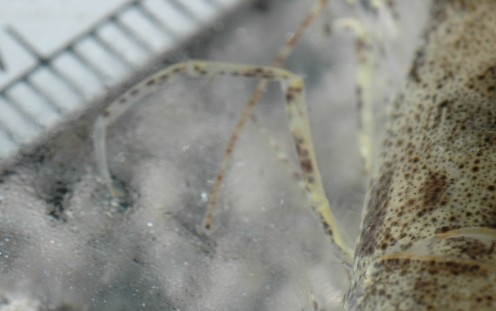
The dactyl
of the 5th pereopod
is not broad and flattened.

The carapace
is smooth and has one median spine a short distance behind the eyes, as
can be seen silhouetted in this view from the right side.
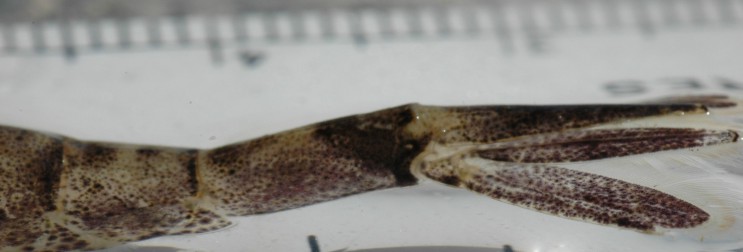
The 5th segment of the abdomen (left full segment in this photo) has
no spines on the posterolateral margin (right edge of segment),
and the 6th segment (middle of photo) has no longitudinal dorsal
ridge.
The uropods
and telson
are to the right.
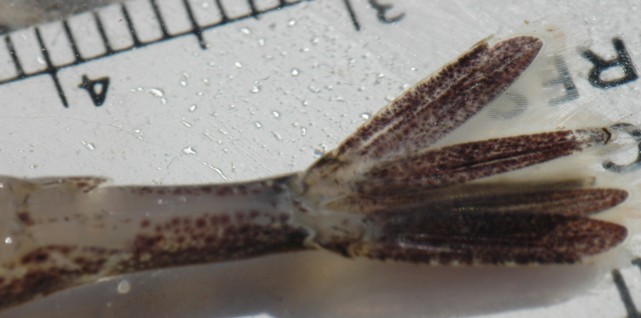
The ventral side of abdominal segment 6 has a median
groove, visible as the light-colored area in this photo.
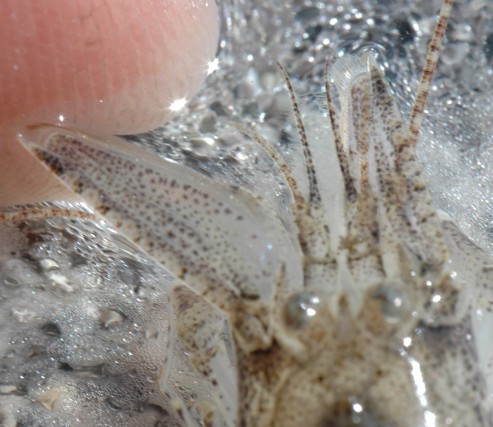
The antennal
scale of the second antennae, being held out by my finger in
this photo,
is more than twice as long as wide and the spine on the end (left side
of scale) is longer
than the flatter
lamella (right side of end of scale)
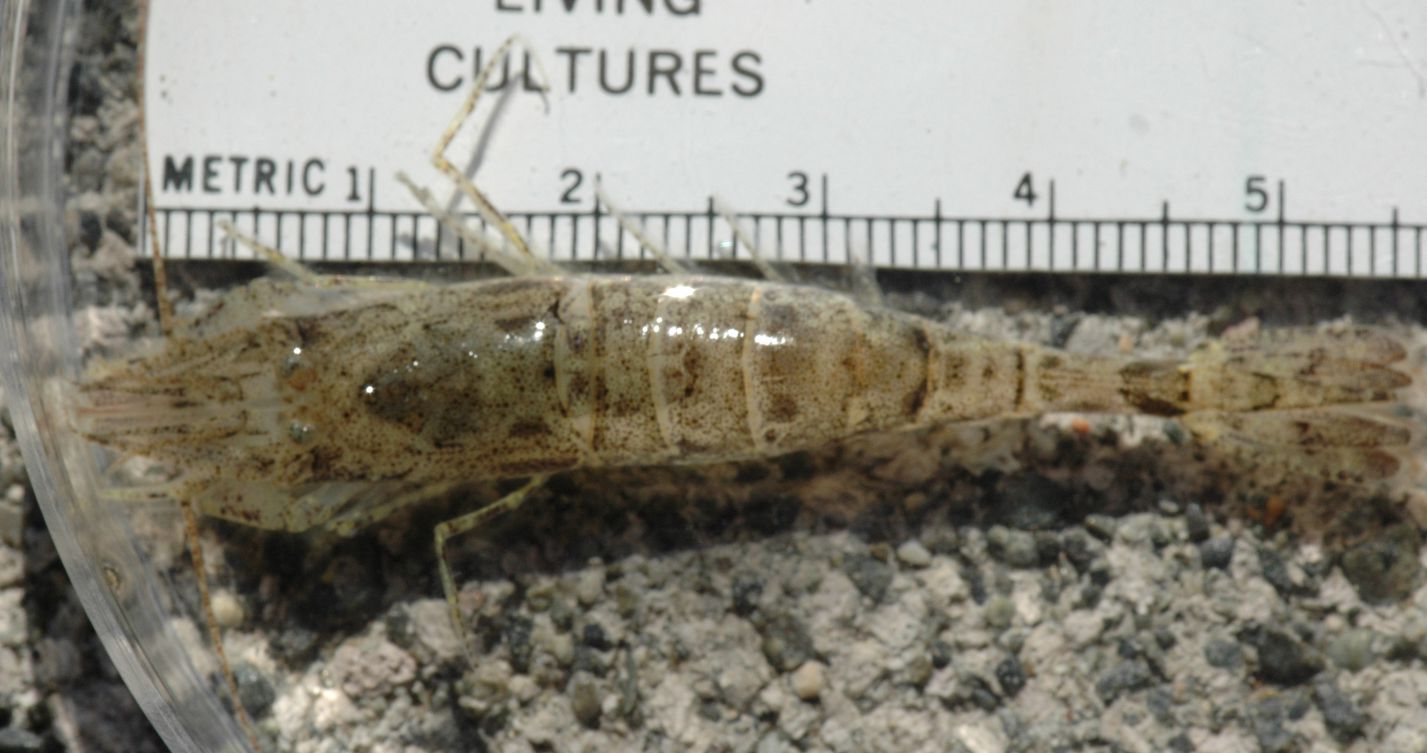
A view of the whole, live animal fom which the parts above were
photographed.
Photo by Dave Cowles, July 2005
Authors and Editors of Page:
Dave Cowles (2005): Created original page